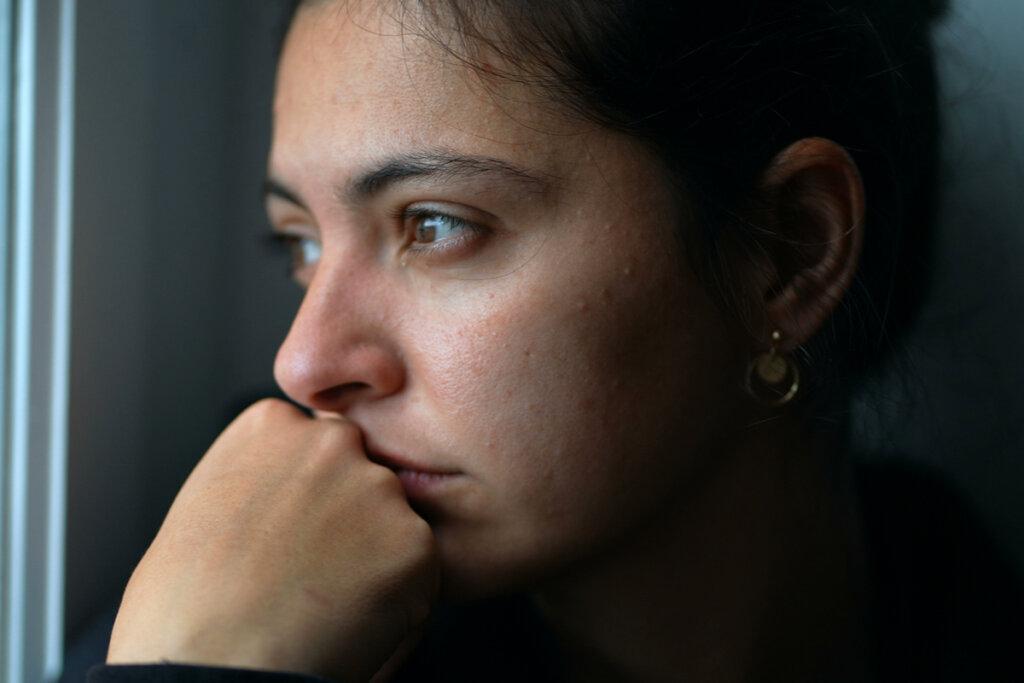Detect Your Family's Emotional Patterns with This Simple Exercise


Written and verified by the psychologist Elena Sanz
Our family and all its dynamics affect us more than we imagine. Have you ever seen yourself treating your children the way your mother treated you (even though you swore not to)? Have you seen yourself expressing anger or sadness the same way your father does? Have you noticed that you and your partner experience the same problems that your parents suffered?
This is something very common, but also something of which we’re not always aware. Or maybe we are, but we don’t know how to stop the cycle. For this reason, we want to propose a simple exercise to identify the emotional patterns of your family.
Of course, this is only half the battle, as once you’re aware, you’ll have to take action in order to see changes. However, understanding where our reactions come from, why we feel a certain way, and when our defense mechanisms came into being can pave the way for us to become the person we want to become and not the one that inertia seems to push us towards..

How Family Emotional Patterns Affect You
The fact that you see in yourself the attitudes, thoughts, and reactions of your relatives isn’t a mere matter of chance. In fact, there are several ways in which we inherit these patterns.
First of all, there’s an undeniable genetic component. For example, it’s estimated that around 30-40% of the predisposition to suffer from anxiety or depression is determined by genes. Thus, a person can inherit a tendency to react disproportionately to certain stimuli. Based on this, you may be just as apprehensive as one or more of your family members, tend to worry as much as they do, or have similar difficulties managing sadness and loss.
But, in addition, the environment plays a crucial role, as the model that we receive in childhood and the early experiences we have determine if these genes will come to be expressed and, in addition, vicarious learning teaches us ways of thinking, feeling and acting. In other words, the most relevant adults in your early years showed you how to relate to the world, how to interpret what’s going on, and how to react to it.
This isn’t written in stone, as it’s always possible to modify the patterns you’ve learned. However, to do so, you need to be aware that they exist and of how they’re operating in you. For this reason, it’s always a good idea to analyze how each member of your family expresses their emotions and how they expressed them when you were little.
Detect and identify the emotional patterns of your family
To carry out this exercise, which will help you identify familiar emotional patterns, you need to decide on two aspects:
- Who are you going to evaluate? It’s a good idea to include all members of the nuclear family (parents and siblings), as well as anyone else who has had a significant influence. For example, that grandfather who lived in your house while you were growing up or that uncle whose emotional expression you find especially unpleasant. It’s also important that you include yourself in the analysis.
- What emotions are you going to evaluate?: You can include as many as you want, but it’s convenient to start with basic emotions, such as joy, sadness, anger, and fear. You can also add any emotion that you think is a problem in your family.
With this data, design a chart or table that includes all the selected people in columns and all the identified emotions in rows. In the box that results from the intersection of both, describe how each person relates to that particular emotion.
For more information, note:
- The way that person expresses that emotion.
- The way you react when that emotion is expressed by others.
Practical example of the exercise
You can take the following table as an example:
| Happiness | Sadness | Fear | Anger | |
| I | 1) I make jokes
2) I ask more about it | 1) I isolate myself and cry alone
2) I try to solve the problems of others | 1) I get paralyzed and worry excessively
2) I downplay the feelings of others | 1) I suppress what I feel
2) I refuse to speak to the other person |
| Mother | 1) Talks in a lively and loud way
2) Detracts from the reasons why the others feel happy | 1) Acts like everything is fine
2) Tries to solve the problems of others | 1) Faces the situation resolutely
2) Minimizes this emotion in others | 1) Yells and blames others for the situation
2) Responds with sarcasm and irony |
| Father | 1) Is friendly and funny
2) Asks more about it | 1) Isolates himself and hides his sadness from others
2) Listens with empathy | 1) Worries excessively
2) Minimizes this emotion in others | 1) Isolates and adopts a victim attitude
2) Keeps silent until the other person apologizes |

Create the change you need
By looking at and analyzing the above table, you’ll find several matches and see repeating patterns among different family members. Seeing the attitudes and reactions of each one graphically will help you understand who you’ve inherited or learned each behavior from; furthermore, it’ll be easier for you to identify which of these reactions are useful and positive and which are dysfunctional.
Keep in mind that it’s not just about finding coincidences but also about understanding the repercussions of each other’s actions. For example, if your father applied the silent treatment when you were angry, you probably learned that expressing that emotion could lead you to be rejected or lose the love of others; for this reason, you began to keep it to yourself and be docile and accommodating.
From this point, you can initiate the changes that you consider necessary. Stay with those reactions and mechanisms that you find useful and functional, and be ready to modify those that only bring you problems or suffering. The poor management of emotions not only makes us less happy but also influences our relationships with others.
Therefore, you can explore new and different coping strategies to apply from now on and give yourself the task of learning new ways to deal with your emotions and those of others. Because it’s not an easy job, it may be best to have professional support to accompany you in the process.
All cited sources were thoroughly reviewed by our team to ensure their quality, reliability, currency, and validity. The bibliography of this article was considered reliable and of academic or scientific accuracy.
- Mardomingo Sanz, M. J. (2015). Epigenética y trastornos psiquiátricos. Pediatría integral, 19(8), 524-531.
- Torrades Oliva, S. (2004). Ansiedad y depresión: Evidencias genéticas. Offarm, 23(3), 126-129.
This text is provided for informational purposes only and does not replace consultation with a professional. If in doubt, consult your specialist.








